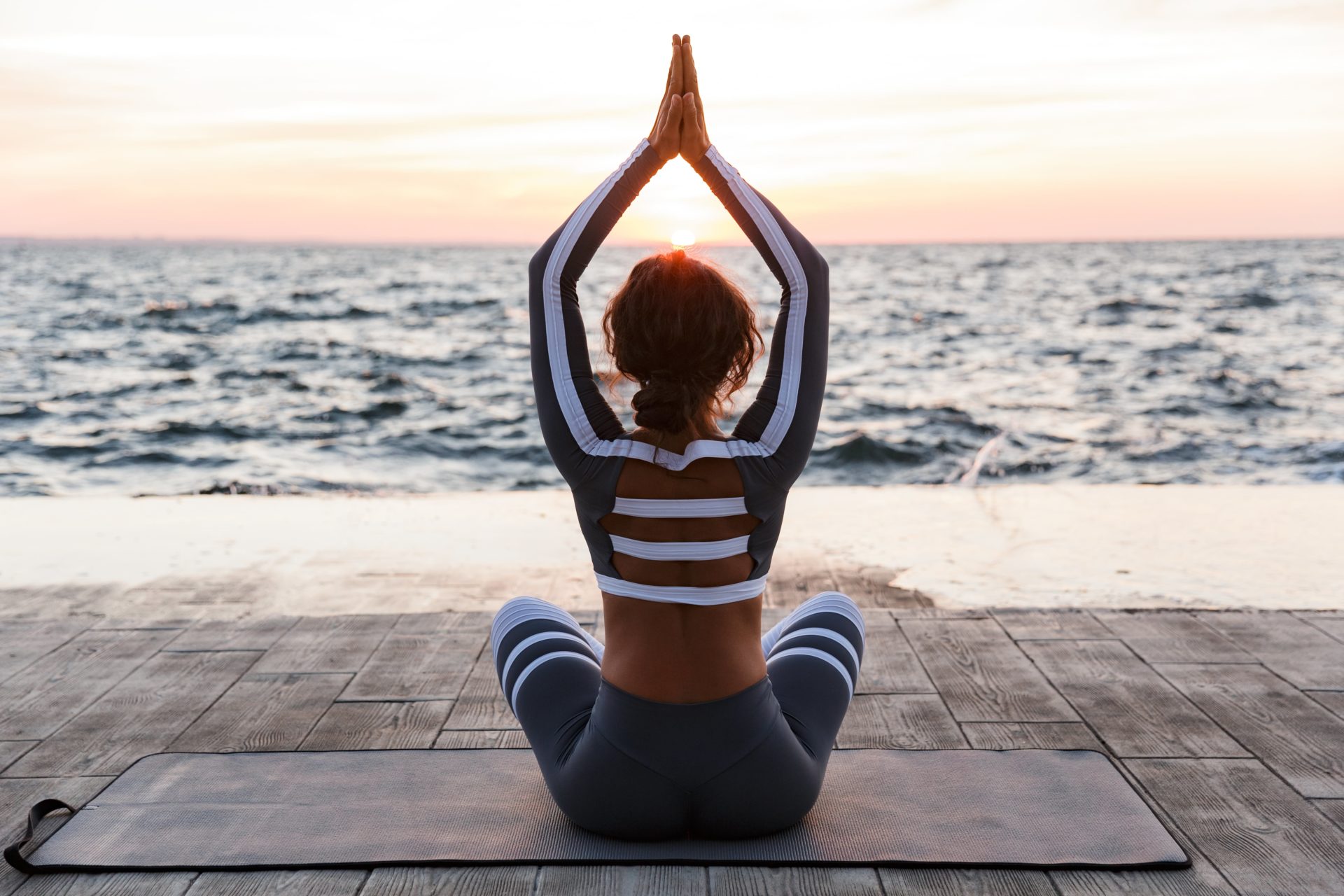Back pain is caused by the sciatic nerve, and in some cases, physical exercise can help open up your hips and reduce the pressure on your lower back.
Usually, the area that you should focus on is your lower back and hips, but the pain can move to your upper back or to your lower legs. If some parts of your body are stiff and difficult to move, your exercises should target those areas.
Keep in mind that while exercises should make you sweat, you should avoid painful moves. The purpose of these exercises are to provide relief, not to force you through motions that cause you pain. If you cannot imitate what you are shown by a professional, don’t get discouraged. It’s important to remember that a professional is most likely more flexible and more experienced with these movements than you are.
Reclining pigeon pose
Yoga is not only for people who want to meditate or open their chakras. It can also help sciatica sufferers stretch the muscles around their hips.
If you are a beginner to yoga, this exercise should be one of the first you learn.
Get Back Your Normal Life Again
As pain specialists, we can guarantee that we are more than qualified in alleviating your pain and treating your condition.
Lie down on your back on a flat surface, preferably a yoga mat, and bring up your left or right leg to form a right angle. Bring your palms behind your thigh and lock your fingers together.
Next, lift your other leg and place your ankle on top of the knee. Hold this position for at least 30 seconds.
Repeat this exercise twice with each leg.
This yoga pose helps stretch the smaller muscles that can contribute to back pain. If you find this exercise to be pain-free, you may be ready to try the next movement, sitting pigeon pose.
Sitting pigeon pose
Start this exercise by sitting on the floor with your legs stretched out in front of you on the mat.
Next, bend your right or left leg by putting the ankle of your opposite leg on your knee. Then, lean forward with your entire upper body and bring your arms forward.
While you are leaning, touch your toes and hold the pose for at least 15 seconds.
This pose helps you stretch your glutes and lower back. Once you are done with the stretch, use the other leg and repeat the same exercise for both legs two more times.
Pelvic tilt
While this is not a yoga pose, it is just as effective in relieving back pain. It helps by strengthening your lower core and stretching the muscles in your lower back.
To get started, lie on your back and breathe deeply. Each time you exhale, tighten your abs by pushing them forward.
Keep your abdominal muscles tight for at least 5 seconds. Then, inhale and take a 5 second break and hold. Repeat the process.
For best results, repeat this exercise 10 times in a row.
Bring your knees to your chest
Knees to chest is a popular exercise used to build a strong back and abdominal muscles. It also helps relieve pain by reducing the nerve compression in your lower back.
First, lie on your back. Lift your knee up and use your arms to pull the bent knee as close as you can towards your chest.
Make sure the movement is gentle, slow, and pain-free. Do not pull your knee until it hurts. Hold the movement for at least 5 seconds, and repeat with the opposite knee.
If you do not experience any pain, repeat the same movement but with both of your knees bent, and hold the pose for at least 10 seconds.
Arm and leg extensions
For this exercise, you will need to get on all fours and work on strengthening and stabilizing your lower back and abdominal muscles.
Begin by getting on all fours on a soft surface and tightening up your abdominal muscles while keeping your back flat yet relaxed.
Raise one leg upward behind you and raise the opposite arm in front of you. Hold the pose for at least 3 seconds and repeat with the opposite arm and leg.
To perform this exercise, make sure you do not have any wrist issues because you might experience pain.
If you are comfortable with this exercise, complete 10 repetitions.
What Happens When Exercises Alone Aren’t Enough to Relieve the Pain?
Under certain conditions, physical exercises alone cannot relieve your pain and medication is needed for relief.
If you want to find out more about how you can achieve relief, contact us for more details about your condition and symptoms here.

